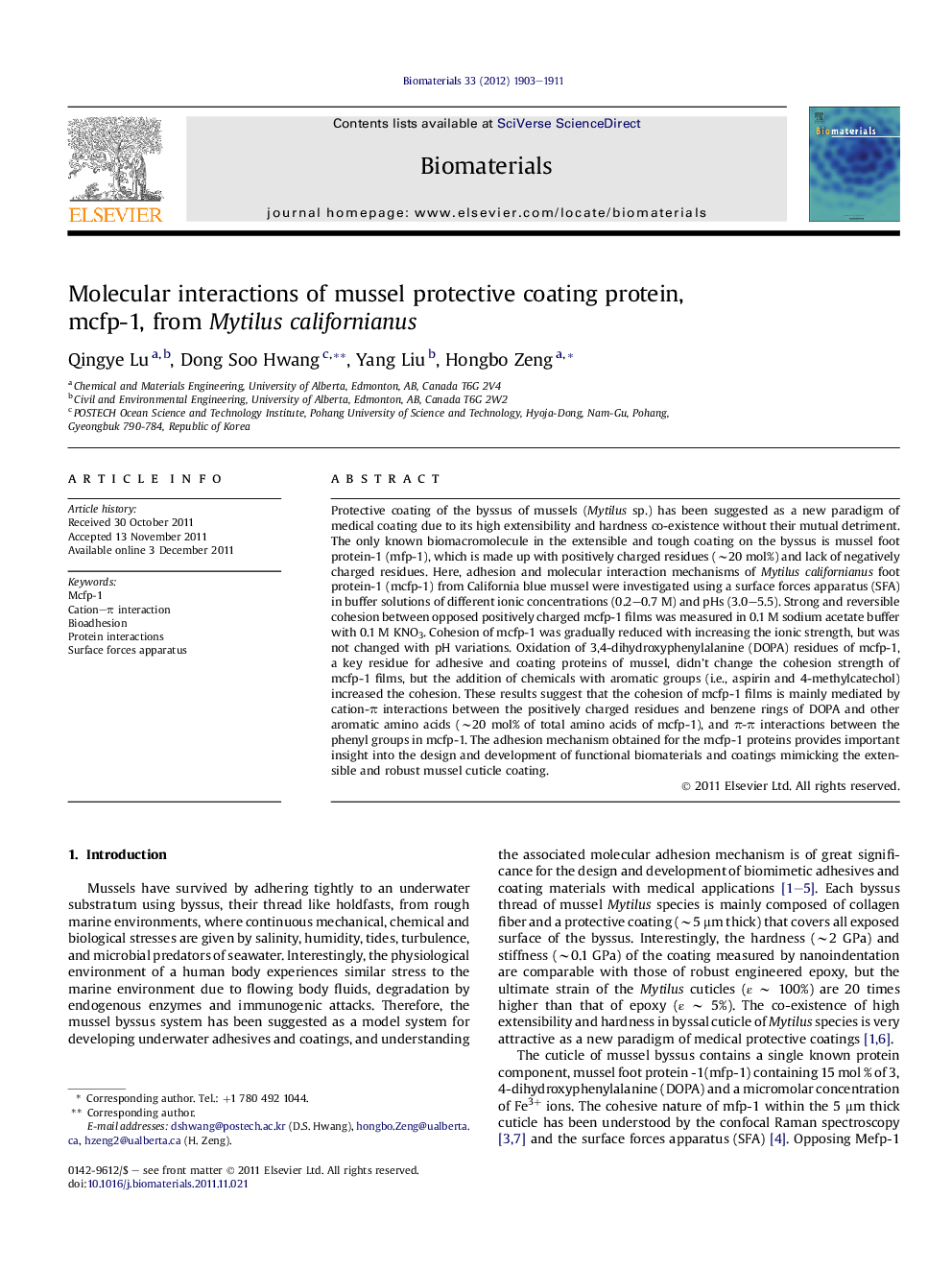| Article ID | Journal | Published Year | Pages | File Type |
|---|---|---|---|---|
| 7173 | Biomaterials | 2012 | 9 Pages |
Protective coating of the byssus of mussels (Mytilus sp.) has been suggested as a new paradigm of medical coating due to its high extensibility and hardness co-existence without their mutual detriment. The only known biomacromolecule in the extensible and tough coating on the byssus is mussel foot protein-1 (mfp-1), which is made up with positively charged residues (∼20 mol%) and lack of negatively charged residues. Here, adhesion and molecular interaction mechanisms of Mytilus californianus foot protein-1 (mcfp-1) from California blue mussel were investigated using a surface forces apparatus (SFA) in buffer solutions of different ionic concentrations (0.2–0.7 M) and pHs (3.0–5.5). Strong and reversible cohesion between opposed positively charged mcfp-1 films was measured in 0.1 M sodium acetate buffer with 0.1 M KNO3. Cohesion of mcfp-1 was gradually reduced with increasing the ionic strength, but was not changed with pH variations. Oxidation of 3,4-dihydroxyphenylalanine (DOPA) residues of mcfp-1, a key residue for adhesive and coating proteins of mussel, didn’t change the cohesion strength of mcfp-1 films, but the addition of chemicals with aromatic groups (i.e., aspirin and 4-methylcatechol) increased the cohesion. These results suggest that the cohesion of mcfp-1 films is mainly mediated by cation-π interactions between the positively charged residues and benzene rings of DOPA and other aromatic amino acids (∼20 mol% of total amino acids of mcfp-1), and π-π interactions between the phenyl groups in mcfp-1. The adhesion mechanism obtained for the mcfp-1 proteins provides important insight into the design and development of functional biomaterials and coatings mimicking the extensible and robust mussel cuticle coating.
